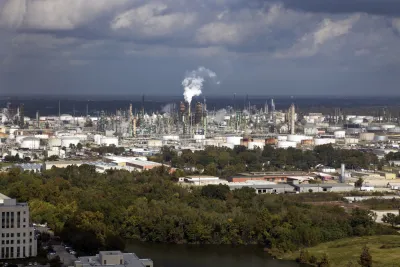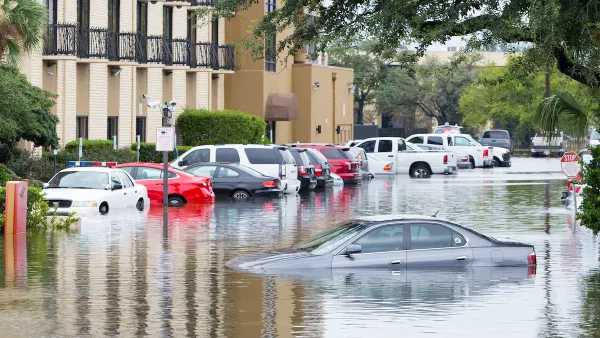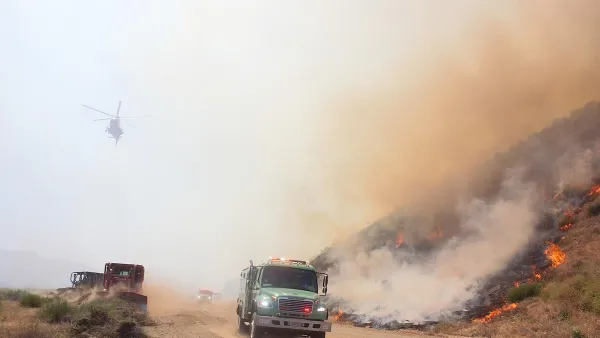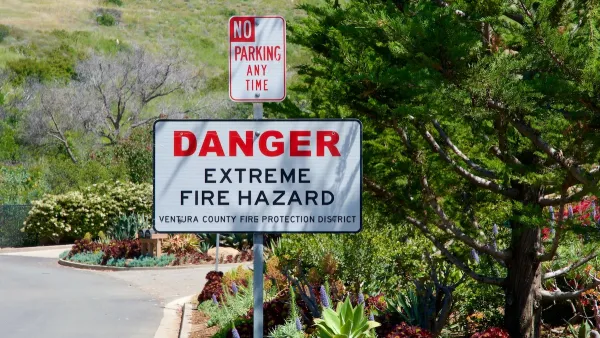Louisiana's chemical plants could release tons of toxic pollution into the air and water during storms, but anti-terrorism provisions make the process of finding risk management information prohibitively difficult.

A new analysis by New Orleans Public Radio (WWNO) and Southerly reveals high levels of risk for Louisiana communities located near the state's coastal chemical plants. The facilities, located in the path of annual hurricanes, emit more air pollution when they shut down in preparation for storms. If damaged by high wind or flooding, the plants run the risk of catastrophic pollution events that can expose wide swaths of the local community to toxic chemicals. The study used EPA data to identify the 30 facilities in the state that store the most toxic materials on site and analyzed the worst-case scenario for each. In ten cases, toxic gases could travel as far as 25 miles from the incident.
Information regarding risk management isn't always easy to come by in the post-9/11 era, with the chemical industry citing the potential for terrorist attacks as a reason to keep their plans closely guarded. To view industry risk management plans, residents have to make an appointment, view plans in person, and only take hand-written notes in the presence of a U.S. Marshal. A spokesperson for Shell, which owns four of the thirty plants in the analysis, would not discuss details but wrote in an email to WWNO that safety is a "top priority," adding that their operations follow strict federal, state, and local regulations.
But the secrecy can have an impact on local communities who can't easily assess the risks to their residents and first responders who lack the information to prepare for emergency scenarios. Emma Cheuse, an attorney with Earthjustice, calls the lack of information a "ticking time bomb" for coastal towns. Earthjustice is suing the EPA for rolling back Obama-era regulatory improvements and pushing for increased transparency and access to risk management information that can protect communities and help them prepare for future disasters.
FULL STORY: 'Ticking Time Bombs': Residents Kept In The Dark About Risks To La.'s Chemical Plants During Storms

Analysis: Cybertruck Fatality Rate Far Exceeds That of Ford Pinto
The Tesla Cybertruck was recalled seven times last year.

National Parks Layoffs Will Cause Communities to Lose Billions
Thousands of essential park workers were laid off this week, just before the busy spring break season.

Retro-silient?: America’s First “Eco-burb,” The Woodlands Turns 50
A master-planned community north of Houston offers lessons on green infrastructure and resilient design, but falls short of its founder’s lofty affordability and walkability goals.

Test News Post 1
This is a summary

Analysis: Cybertruck Fatality Rate Far Exceeds That of Ford Pinto
The Tesla Cybertruck was recalled seven times last year.

Test News Headline 46
Test for the image on the front page.
Urban Design for Planners 1: Software Tools
This six-course series explores essential urban design concepts using open source software and equips planners with the tools they need to participate fully in the urban design process.
Planning for Universal Design
Learn the tools for implementing Universal Design in planning regulations.
EMC Planning Group, Inc.
Planetizen
Planetizen
Mpact (formerly Rail~Volution)
Great Falls Development Authority, Inc.
HUDs Office of Policy Development and Research
NYU Wagner Graduate School of Public Service




























